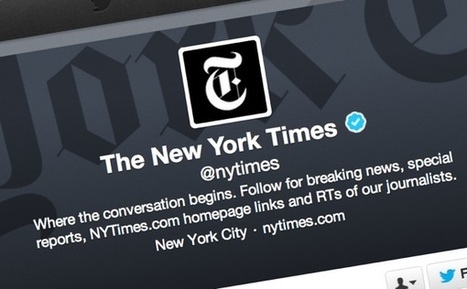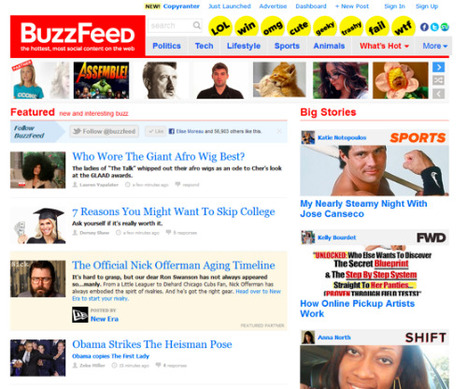Cypriot Entrepreneur and Author Andreas Christodoulou Shines on a Global Stage - IssueWire
Get Started for FREE
Sign up with Facebook Sign up with X
I don't have a Facebook or a X account
 Your new post is loading... Your new post is loading...
 Your new post is loading... Your new post is loading...

Jeff Domansky's curator insight,
January 10, 2014 12:01 PM
The team at NY Times' Twitter accounts looks at what worked, what didn't — from running @nytimes in 2013. Recommended reading. 
Lori Wilk's curator insight,
January 10, 2014 2:50 PM
As a Twitter fan like to hear about best practices and have posted more than 19,000 Tweets ont Twitter@Successipes .Takeway from this article: "If a Tweet worked, post it again." The shelf-life of a Tweet is relatively short so re-posting a successful Tweet makes sense and either reinforces the message or reaches new people who didn't see it the first time you posted it.

FREDRICK MUTOONI's curator insight,
January 11, 2014 9:10 AM
I learned three major things from this NYT article 1. Its ok to re-tweet but re-tweet targeting absent audience that may have missed your original tweet 2. Do not be opinionised on your tweets. 3. The power of celebrities exceed that of the corporation you own or your working for Fredrick Mutooni (Pictured) curates tourism contents and videos that educates and promotes East African Community countries tourism industry #TourismContentCurator #GreatSafariVideos |

Robin Good's curator insight,
February 18, 2014 12:24 PM
What's ahead of us when it comes to web publishing? How will the tools, methods and approaches to design, to create and to package news and information change over the course of the next few years? In the second part of this article, I am looking at these key trends: 1) Dusk of Blogs 2) Beyond WordPress 3) Instant Publishing 4) Invisible UI 5) Design Intelligence 6) Design Marketplaces Full article: http://www.masternewmedia.org/future-webpublishing-trends-beyond-2014-part2/ Reading time: 19' See Part I here: http://www.masternewmedia.org/future-webpublishing-trends-beyond-2014/ 
Barbara Saunders's curator insight,
February 19, 2014 12:07 PM
. . .hmmmm interesting thoughts for beyond 2014.
Julie Groom's curator insight,
October 23, 2013 4:48 AM
Curating - how to manage it. And curation experts already exist - they're called Librarians! |



















Andreas Christodoulou (aka "andreascy")
⇢ Business expert with elite skills and extensive knowledge in the Tech & Media Industry.
Lichtervelde, West-Vlaanderen Sep 7, 2023 (Issuewire.com)